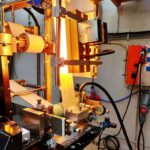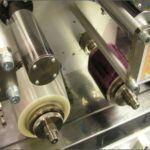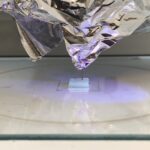Coating techniques
- Batch coating:
- Spin coating (also in glove-box)
- Rod coating
- R2R* coating:
- Blade/reverse gravure/gravure offset/knife/slot die coating (300mm web, 1-50 m/min, 0.1-1000µm wet coating thickness)
- Reverse gravure coating (100mm web, 0.2-5 m/min, 0.1-1000µm wet coating thickness)
- KSV dip coater
- Spray coater

Printing techniques
- Inkjet printing (Dimatix 2830, PiXDRO LP50)
- Flexography & offset lithography printing (IGT Global Standard Tester 2)
- Electrophotographic wax printing (Xerox ColorQube 8580)
- Soft lithography Screen printing (TIC Screen printer SCF-260B, Technical Industrial Co.)
- 3D printing: UP Plus 3D material printer, Allevi 2 bioprinter, Makerbot replicator 1 & 2, Sigma 3D printer, Procusini food printer, Me3D Fused Deposition Modeling (FDM) printer, Ultimaker 2 FDM printer, Rokit INVIVO 3D bioprinter
- MAKEX M-One Pro30 Digital Light Processing (DLP) Printer
- Two Brinter One-Multitool 3D bioprinter Brinter Bioprinte

Surface energy control
- Ultraviolet treatment (batch/R2R)
- Corona treatment (R2R)
- Infrared treatment (strong IR-lamp)
- Plasma treatment (batch)
- UV-ozone cleaner (batch)
- Plasma cleaner (Harrick)
Grafting and molecular monolayers
- Electron beam grafting (with living free radical polymerization) Self-assembled monolayer deposition
Additional surface modification techniques
- Sputter
- Thermal evaporator (metals and organics)
- E-beam vacuum evaporator (inside glove-box)
Additional surface modification techniques available through existing co-operation with external partners

- Atomic layer deposition
- Plasma coating
- Chemical vapor deposition
* R2R = Roll-to-roll processing